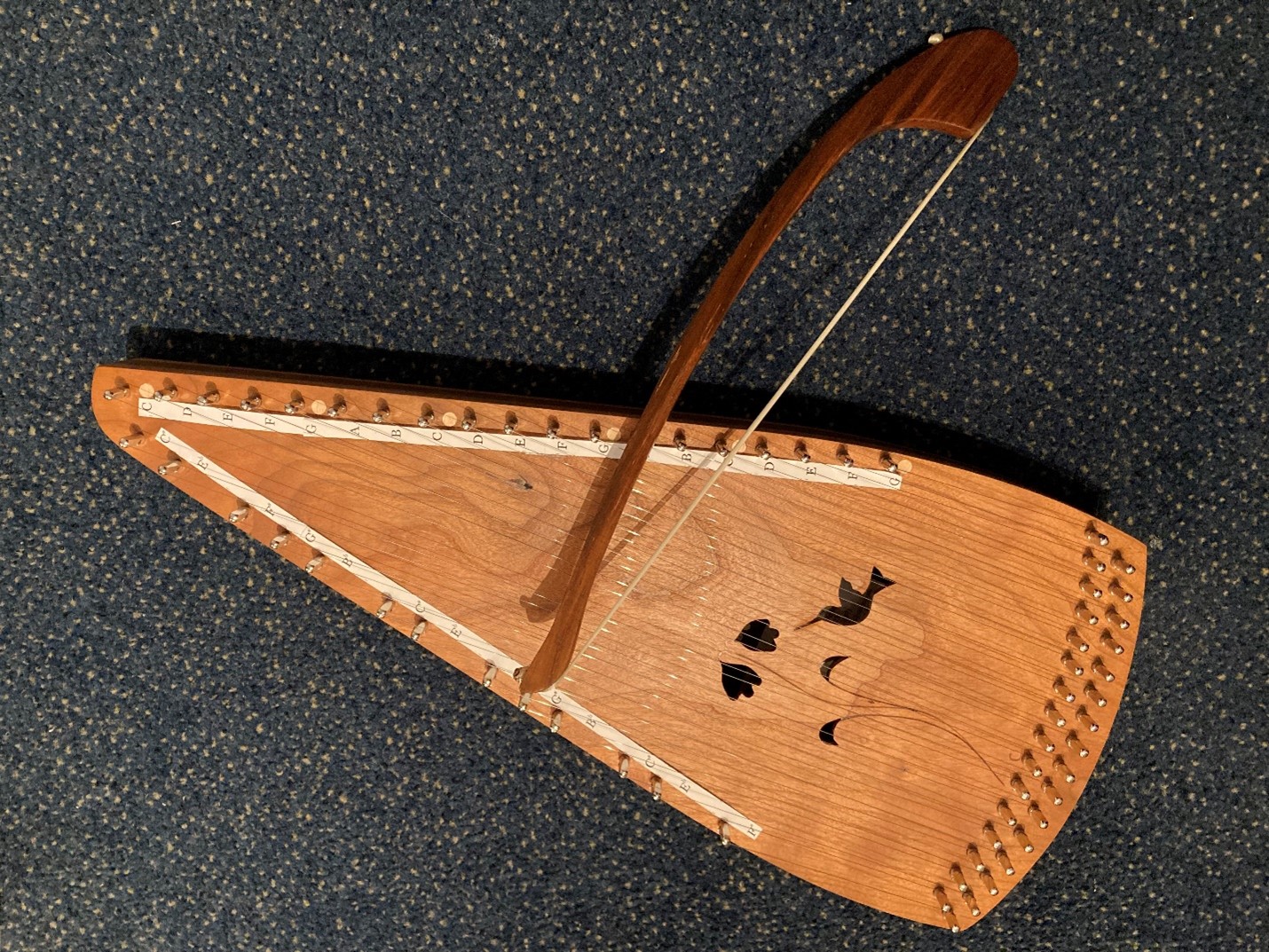
The Bowed Psaltery!
By Alyssa Cowell, Catoctin School of Music
Let’s get to know CSM’s Folk Instruments! Today’s instrument is the Bowed Psaltery – a super cool stringed instrument dating back to the 12th Century!
What is a bowed psaltery?
The bowed psaltery is a hollow-bodied, triangle-shaped wooden instrument set with a series of metal strings threaded through metal string pins. Bowed psalteries come in a variety of sizes to accommodate a wide range of pitches. CSM’s Bowed Psaltery is arranged for chromatic playing and has 32 strings on it ranging from C4 (middle C) – G6. The metal strings provide ample resonance and sustain. The sound hole on the psaltery can be very plain, or very decorative depending on the luthier who build the instrument – CSM’s psaltery has a depiction of a hummingbird visiting a flower as the sound hole design.
How do you play one?
True to its name, the bowed psaltery’s sounds are activated by drawing a small, curved bow across the strings. The player holds the pointed end of the instrument in their hand as the body of the instrument rests on the player’s forearm and the base of the instrument nestles into the crook of the arm. The bow is then drawn across the strings near the tuning pin closest to pointed end of the instrument. Only one string can play at a time – so the notes of a bowed melody are often a bit disconnected. Legato playing can be achieved with the addition of a second bow. Laying the psaltery on the lap of the player, a bow in each hand allows for seamless transitions between notes. Furthermore, the extra bow can be used to introduce a harmony line. Alternately, the psaltery can be plucked with the fingers in the same fashion as a zither. The long sustain of the metal strings means that players should be aware of overlapping tones that can sound muddy.
Take a listen to a two-handed bowed psaltery in action!
